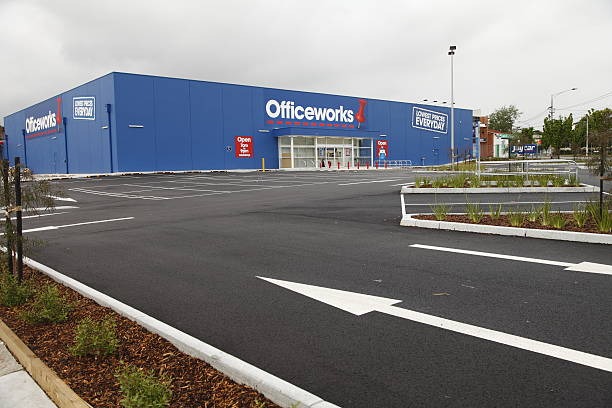Melbourne’s commercial warehouse market stands as one of Australia’s most sophisticated and diverse industrial property environments, shaped by the city’s manufacturing heritage, strategic port access, and role as the nation’s logistics gateway to Asia. The Victorian capital’s industrial sector encompasses everything from small-scale urban warehouses serving last-mile delivery operations to massive distribution centers handling national supply chains. Selecting the optimal commercial warehouse for rent Melbourne requires navigating complex market dynamics, understanding regional infrastructure capabilities, and evaluating how different locations align with specific operational requirements. Melbourne’s industrial vacancy rates hover around 2.8%, reflecting strong demand across most sectors while creating competitive pressure for premium facilities. The city’s extensive freeway network, established manufacturing ecosystem, and skilled workforce provide compelling advantages, but success depends on matching facility characteristics with business objectives while managing the costs associated with one of Australia’s most expensive industrial markets.
Geographic Zones and Strategic Positioning
Melbourne’s industrial geography divides into distinct corridors that serve different commercial functions and market segments. The western corridor, anchored by suburbs like Laverton, Altona, and Truganina, dominates the city’s logistics and distribution landscape. This region benefits from direct access to the Port of Melbourne and major highway networks, making it ideal for import/export operations and national distribution centers.
The southeastern industrial belt, stretching through Dandenong, Clayton, and Noble Park, represents Melbourne’s traditional manufacturing heartland. These areas offer established infrastructure, skilled labor pools, and proximity to research institutions, making them particularly suitable for value-added manufacturing and specialized production operations.
Northern suburbs including Campbellfield, Somerton, and Epping provide excellent connectivity to New South Wales markets via the Hume Highway corridor. These locations attract businesses focusing on interstate distribution or requiring access to both Melbourne and Sydney customer bases within single operational footprints.
The outer western growth corridor, encompassing newer developments in Melton and Caroline Springs, offers larger land parcels and modern facilities at more competitive rental rates. However, these areas may lack the established workforce and infrastructure maturity found in traditional industrial zones.
Eastern suburbs like Scoresby and Rowville cater to technology-focused businesses and high-value manufacturing operations, benefiting from proximity to skilled workforces and research facilities, though at premium rental rates that reflect these advantages.
Transportation Infrastructure and Connectivity
Melbourne’s extensive freeway system provides unparalleled connectivity compared to other Australian capitals, but understanding traffic patterns and access limitations becomes crucial for operational planning. The Western Ring Road offers excellent north-south connectivity while avoiding city center congestion, making western corridor locations particularly attractive for distribution operations.
EastLink and the Monash Freeway serve southeastern industrial areas but experience significant congestion during peak periods that can impact delivery schedules and operational costs. Businesses requiring predictable delivery windows should factor these constraints into location decisions.
Rail freight connectivity varies significantly between industrial areas, with some precincts offering direct rail access while others rely entirely on road transport. The Port of Melbourne’s rail connections provide cost advantages for bulk commodity movements, but access requires specific facility configurations and operational procedures.
Public transportation access affects workforce availability and recruitment costs, particularly as Melbourne’s industrial areas often locate significant distances from residential centers. Areas with established bus routes or train connections typically maintain more stable staffing levels and lower wage premiums.
Facility Specifications and Modern Requirements
Contemporary commercial operations demand specific technical capabilities that many older Melbourne warehouses cannot accommodate without substantial modification. Clear span construction with minimal column interference enables efficient layout optimization and accommodates modern material handling systems.
Ceiling heights of 10-12 meters have become standard for most distribution operations, while specialized applications may require even greater clearances. Older Melbourne warehouses often feature lower ceiling heights that limit storage density and equipment options.
Loading dock configurations significantly impact operational efficiency, with modern facilities providing level-bed truck docks, hydraulic dock levelers, and weather sealing systems. The number and spacing of dock doors should align with anticipated truck volumes and operational schedules.
Floor specifications including load-bearing capacity, surface flatness, and joint spacing affect equipment performance and maintenance costs. Modern warehouses feature laser-leveled floors with minimal joints, while older facilities may require costly upgrades to support high-density storage systems.
Climate control requirements vary based on product types and operational needs, with some areas of Melbourne experiencing significant temperature variations that affect storage conditions and equipment performance.
Financial Considerations and Market Dynamics
Melbourne’s commercial warehouse rental rates vary dramatically between locations and facility types, with prime western corridor properties commanding $120-180 per square meter annually while outer suburban locations may offer rates below $90 per square meter.
Outgoing costs including property taxes, insurance, and maintenance typically add 15-25% to base rental rates, though specific amounts depend on facility age, location, and service levels. Understanding these additional costs prevents budget surprises and enables accurate facility comparisons.
Lease incentive packages often include rent-free periods, tenant improvement allowances, and flexible terms that can significantly impact effective rental costs. Melbourne’s competitive market enables more favorable negotiations for quality tenants, particularly those requiring longer-term commitments.
Market escalation clauses determine future rent increases and should be evaluated carefully given Melbourne’s volatile property market. Fixed percentage increases provide budget certainty, while market-based reviews may offer advantages during stable periods but create uncertainty during growth cycles.






